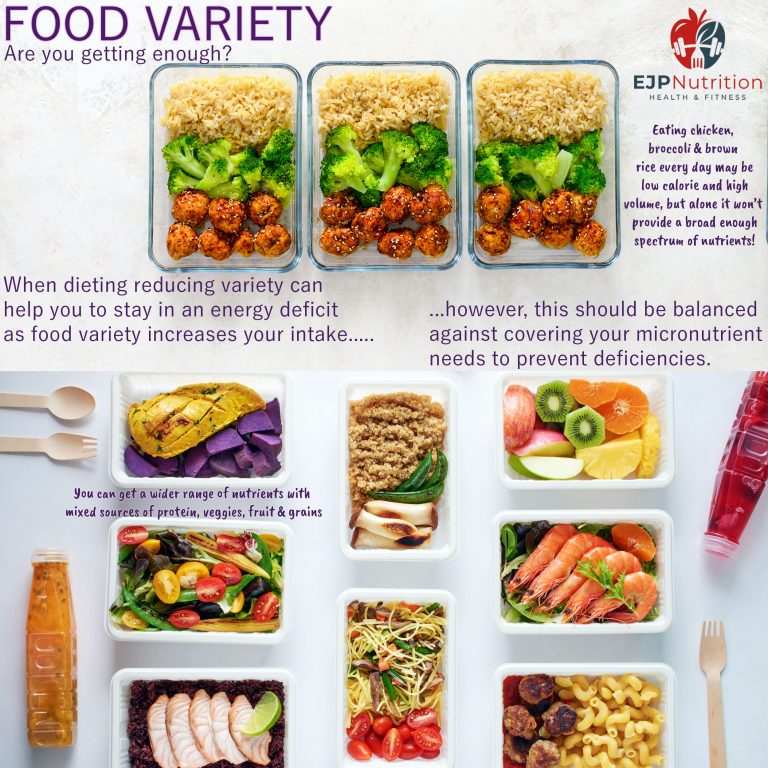If I had a penny for every time I wrote “eat a healthy, balanced diet”, or words to that effect! The reason behind that advice is a range of nutrients are required for optimal health. Protein, with the full range of EAA’s, for muscle retention/growth, recovery and immunity. Essential fats for the production of hormones, general health and immune function. Plus carbs for energy and starches/fibre for digestive health. We also need a range of micronutrients to prevent deficiencies.
If you look at one meal in isolation, lets use the example in the image of chicken, broccoli and brown rice. This is providing protein, fibre and some micronutrients, which is a good option for dinner. The problem is if you eat that everyday you ONLY get a small range of nutrients. The guideline of eating 5-a-day for another example, you could eat 5 apples, but that only counts as 1 portion.
Studies have found a range of popular diets (Mediterranean, IF, Paleo) had suboptimal levels of folate, dietary fibre and calcium. While low fat diets have been associated with lower intakes of various micronutrients including calcium, zinc, magnesium and B12.
Why is this relevant? Because a common strategy when dieting for weight loss is to reduce the variety of food. Food variety causes an appetite-stimulating mechanism due to a renewed palatability and interest in eating food. Including more variety can also delay satiation – where you don’t feel full as quickly.
If you’ve been to a buffet you’ll know how easy it is to over-eat. Have a little bit of everything! Or out at a restaurant, and you can always find room for dessert!
To wrap this up; when you are dieting, eating less food means less nutrients. Be aware of the balance you are getting, and maybe consider a multi-vitamin to cover any areas where you are short. But having less variety can help increase your adherence. For overall health eating a balanced diet with lots a variety should provide the range of nutrients you need.
References: Mac Nutrition Uni, Tully 2016, Obarazanek et al 1997 & Horvath et al 2000, Brondel 2009, Yeoman 2004, Romer et al 2006
(Reposted from Instagram)


